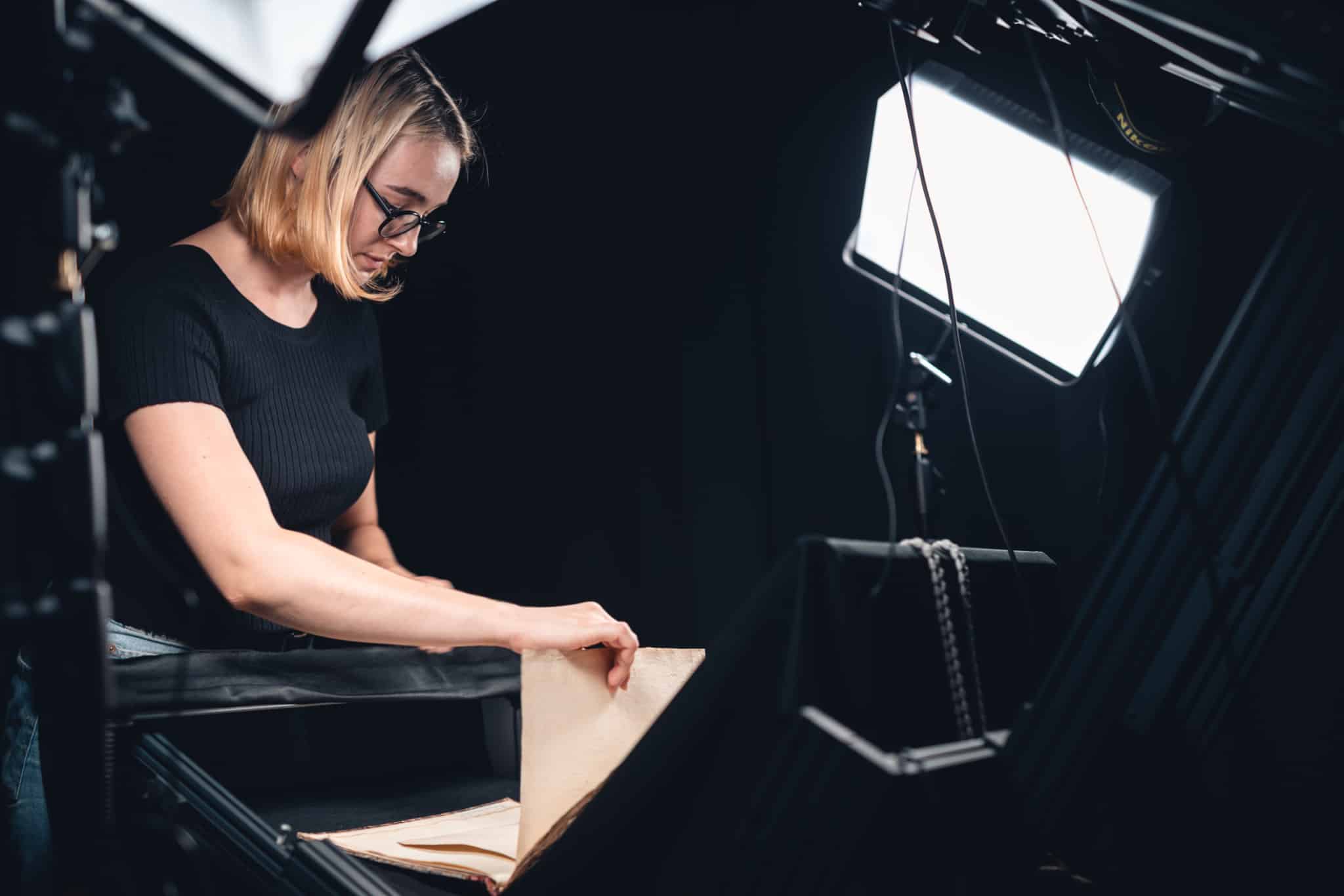For some ten years now, KBR has been digitising its collections, not only for preventive conservation purposes, but also for the online dissemination of these collections. To be able to carry out this task properly, the institution set up a Digitisation Department in 2011 which is responsible for coordinating the implementation of digitisation projects.
Digitisation on demand
Digitising heritage
Digitisation is the systematic reproduction in digital format of the documentary and artistic heritage that is preserved in heritage institutions. The aim is to make it possible to view heritage items on a computer, and to do so in a way that is understandable and scientifically reliable. This requires, on the one hand, a systematic approach for capturing images and, on the other hand, the generalised creation of mutually interchangeable and structured metadata.
At the same time, the objective of digitisation is also to preventively preserve the original items. The digitisation stations that KBR is using have been specially designed to store all the information from the sources in question without damaging the sources themselves. The images and metadata produced in this way are the files that must be saved for the long term on a server in the context of a durable digital archiving policy.
Three reasons to digitise
The information society has led to new tasks for heritage institutions in general, and for libraries in particular: they now have to reach out to a new audience, beyond the confines of the institution. Digitisation is crucial to this.
Why should heritage be distributed in digital format?
- It makes the work of researchers easier
- It satisfies the curiosity of those who are interested in heritage and who are keen to acquire new knowledge
- It makes heritage accessible to an audience that cannot access it physically on site due to geographic distance or limited mobility
Our digitisation policy
KBR wants to fulfil these three expectations with its digitisation policy. To be successful, KBR must ensure the following:
- the systematic production of structured descriptive metadata that has been scientifically validated
- the production of high-quality images that provide all the required guarantees in terms of lighting, colour and sharpness.
KBR’s digitisation policy also takes copyright into account.
The digitisation of an institution’s heritage should be seen against the backdrop of an exponential increase in the number of complementary websites and digital portals. Therefore one has to observe international regulations in these domains to ensure the mutual exchangeability of the digitised corpora that are produced.
Priorities: 5 selection criteria
1. KBR prioritises:
- works from Belgian authors, published in Belgium
- works related to the history of the districts that overlap with the territory of modern-day Belgium
2. Within this, priority is given to vulnerable collections, more specifically to those which can no longer be viewed in the traditional way in the reading room because they are in an advanced state of deterioration or because they are fragile.
3. Having said that, the digitisation policy aims to reflect the wide range of the institution’s heritage. For this reason, the digitisation programmes are not only concerned with the collections of current printed matter and newspapers, but also with the older books, manuscripts, music collections, collections of drawings and prints, the cartographical heritage and collections of coins and medals. It goes without saying that special attention will be paid to KBR’s masterpieces.
4. As far as is possible, royalty-free corpora will be given priority ahead of those sources to which copyrights apply. This is because we want to bring as many digitised collections online as possible.
5. Finally, it is not possible to distribute a digitised corpus without metadata. For this reason, only those sources that have usable, descriptive metadata will be included in the digitisation programmes.
Contact
Contact us






